
Pärnu is the fourth largest city in Estonia and third in terms of the ethnic Estonian population. Situated in southwest Estonia, Pärnu is located 128 kilometres (80 mi) south of the Estonian capital, Tallinn, and 176 kilometres (109 mi) west of Estonia's second largest city, Tartu. The city sits off the coast of Pärnu Bay, an inlet of the Gulf of Riga, which is a part of the Baltic Sea. In the city, the Pärnu River drains into the Gulf of Riga.
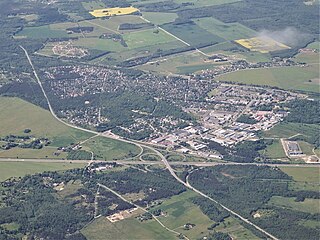
Saue is a town in north-western Estonia. It's the administrative centre of Saue Parish in Harju County.

Haapsalu is a seaside resort town located on the west coast of Estonia. It is the administrative centre of Lääne County, and on 1 January 2020 it had a population of 9,375.

Rapla is a town in central Estonia, the capital of Rapla County and the centre of Rapla Parish.

Rakvere is a town in northern Estonia and the administrative centre of the Lääne-Viru maakond (county), 20 km south of the Gulf of Finland of the Baltic Sea. Rakvere is the 8th most populous urban area in Estonia. Rakvere has a total area of 10.75 square kilometres, and although about 15% of Rakvere is covered by forest, it is still the country's third most densely populated urban area. From the 13th century until the early 20th century, Rakvere was more widely known by its historical German name, Wesenberg(h).

Jõhvi is a town in northeastern Estonia, and the administrative centre of the Ida-Viru County and Jõhvi Parish. The town is situated about 50 km west of the Estonia–Russia international border.

Paldiski is a town and Baltic Sea port situated on the Pakri Peninsula of northwestern Estonia. Since 2017, it's the administrative centre of Lääne-Harju Parish of Harju County. Previously a village of Estonia-Swedes known by the historical name Rågervik, it was extended into a Russian naval base in the 18th century. The Russian authorities renamed it Балтийский Порт in 1762. In written Estonian, the name was spelled Baltiski until 1933, when the phonetically spelled version Paldiski became official.

Keila is a town and an urban municipality in Harju County in north-western Estonia, 25 km (16 mi) southwest of Tallinn. Keila is also the location of administrative buildings of the surrounding Keila Parish, a rural municipality separate from the town itself.

Võru is a town and a municipality in south-eastern Estonia. It is the capital of Võru County and the centre of Võru Parish.

Kärdla is the only town on the island of Hiiumaa, Estonia. It is the capital of Hiiu County and the administrative center of Hiiumaa Parish.

Kallaste is a town in Peipsiääre Parish, Tartu County, Estonia. It is located on the western shore of Lake Peipus. Most of the population are Russians, 15% being Estonians.

Jõgeva is a small town in Estonia with a population of around 5000 people. It is the capital of Jõgeva Parish and Jõgeva County.

Kunda is a town in the Viru-Nigula Parish of Estonia, located on the coast of the Gulf of Finland. Kunda is most famous for its cement factory, port and archaeological heritage.
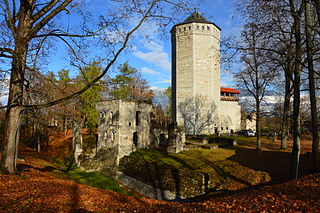
Paide is a town in Estonia and the capital of Järva County, one of the 15 counties of Estonia.

Põltsamaa is a town in Põltsamaa Parish, Jõgeva County, Estonia. The town is situated on the Põltsamaa River, and features a 13th-century castle.

Türi is a town in Järva County, Estonia. It is the administrative centre of Türi Parish. Since 2000, Türi is known as the "spring capital" of Estonia. It has a railway station on the Tallinn - Viljandi railway line operated by Elron.

Narva-Jõesuu is a town in Ida-Viru County, in northeastern Estonia.
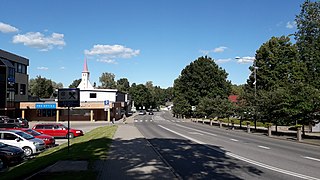
Põlva is a town in southeastern Estonia, the capital of Põlva County, and the centre of Põlva Parish.
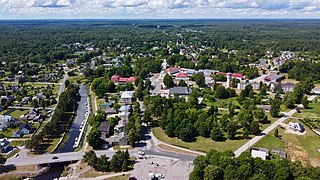
Mustvee is a town in Mustvee Parish, Estonia. It lies on the shore of Lake Peipus in Jõgeva County. Its population of 1,600 is approximately half Estonian and half Russian. The name of Mustvee was first recorded in 1343 at the time of reign of Livonian order. It became a haven for Russian Old Believers after the Russian government declared them outlaws in 1658. Mustvee has held fairs for the past two centuries. Due to its position at the broadest part of the lake, this traditional fishing town is increasingly popular as a tourist centre. The new Harbour of Mustvee was opened 18 December 2014.
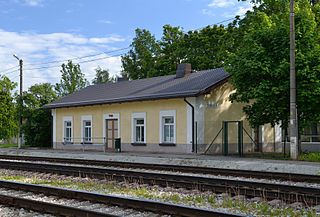
Tamsalu is a town in Tapa Parish, Lääne-Viru County, Estonia.


























